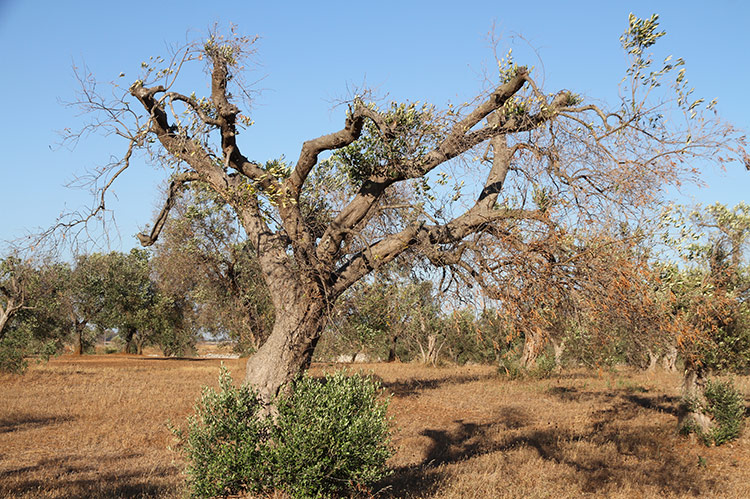Spectral imagery is a powerful tool in detecting symptoms of Xylella fastidiosa in olive trees before they are visible.
Hyperspectral and thermal cameras were used on manned and unmanned aircraft to detect the physiological changes of Xylella in more than 7,000 olive trees in Southern Italy over two years. This landscape study resulted in a reliable Xylella diagnosis in 80% of the trees, confirmed by qPCR.
This study was an international collaboration between researchers from Spain, Italy, UK, Germany and the EU, and proved that pre-visual symptoms could be accurately detected using imagery and that this study has broad implications for surveillance of Xylella and other plant pests, including phylloxera in Australia.
Xylella fastidiosa is one of the most dangerous plant bacteria worldwide, causing incurable disease in more than 350 plant species including commercial plants such as olives and grapevines, and ornamental plants. Visual signs of infection in olives become evident after 10-12 months. During this time, vector spread can occur and spread the Quick Olive Decline syndrome. Early detection is therefore an essential component of eradication.
Once infection occurs, physiological changes occur within the plant. The Xylella causes clogging of the xylem vessels, which leads to a reduction in the plant’s photosynthetic and transpiration rates. Photosynthetic pigments such as chlorophyll degrade. This gradual reduction in chlorophyll fluorescence can be detected by hyperspectral remote sensing techniques.
For more information click here: https://www.nature.com/articles/s41477-018-0189-7
